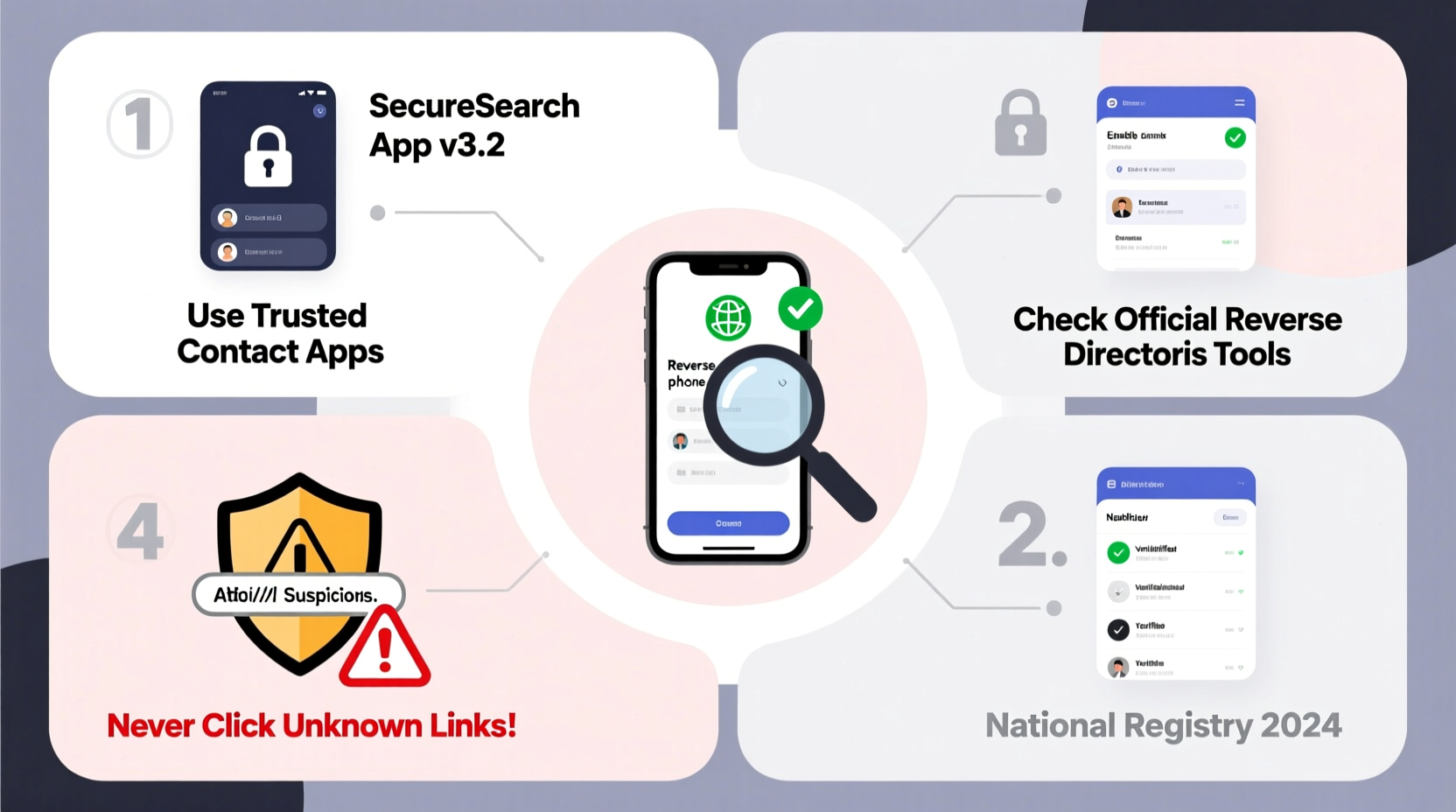Finding the owner of a phone number can be essential in today’s digital world—whether you're screening unknown calls, reconnecting with an old contact, or verifying a business. However, doing so must balance speed with privacy and legality. With rising concerns about data misuse and scams, it's crucial to use reliable, ethical methods that protect both your information and others'. This guide outlines practical, secure strategies to identify phone numbers while respecting legal boundaries and digital safety.
Why Locating a Phone Number Matters

In an age where over 80% of spam calls come from spoofed or hidden numbers, knowing who’s on the other end of the line is more than convenience—it’s protection. Misidentified calls lead to phishing attempts, identity theft, and emotional distress. On the flip side, reconnecting with someone through a lost number can rekindle relationships or resolve important matters. The key lies in using accurate, non-invasive tools designed for transparency and user safety.
Reliable Reverse Phone Lookup Services
Reverse phone lookup tools are among the most effective ways to trace a number. Unlike standard directories, they allow you to input a phone number and retrieve associated details such as name, location, carrier, and sometimes social media profiles.
Top-tier services like Truecaller, Spokeo, and Whitepages utilize vast public records and user-contributed data to deliver fast results. While free versions offer basic insights (e.g., “Likely Spam”), premium subscriptions unlock full reports including address history and possible relatives.
- Truecaller: Best for mobile numbers; uses crowd-sourced spam reporting.
- Whitepages: Strong U.S.-based database with landline accuracy.
- Spokeo: Aggregates data from social networks, public records, and property listings.
When choosing a service, verify its compliance with data protection laws like GDPR or CCPA. Avoid platforms that promise “100% anonymity” or claim access to private databases—these often operate in legal gray zones.
Step-by-Step Guide to Tracing a Number Safely
- Document the number: Save the full number with country code if available.
- Search via Google: Enter the number in quotes (e.g., “+1-555-234-5678”) to see if it appears on forums, scam lists, or business pages.
- Use a reverse lookup tool: Try a reputable site like Whitepages or Truecaller. Start with free options before upgrading.
- Analyze the results: Look for consistency across sources—multiple matches increase reliability.
- Verify legitimacy: If the number belongs to a business, cross-check with their official website or directory listing.
- Report abuse if needed: Mark spam numbers in your phone or report them to the FCC or local telecom authority.
Do’s and Don’ts When Investigating Phone Numbers
| Do’s | Don’ts |
|---|---|
| Use encrypted, reputable websites with clear privacy policies | Share your own personal information during searches |
| Check multiple sources for corroboration | Rely solely on unverified user comments or forums |
| Report persistent scam numbers to authorities | Purchase access to “hacking” or “private database” services |
| Enable call-blocking features on your device | Confront individuals without evidence or context |
Real Example: Identifying a Suspicious Caller
Sarah began receiving daily calls from a number labeled “Unknown” on her iPhone. After missing several, she noticed the same number left a voicemail claiming her car warranty was expiring. Skeptical, she pasted the number into Google and found it linked to a known scam operation in Florida. She then used Truecaller to confirm the label: “Fraud Risk.” Sarah reported the number to the FTC and enabled automatic blocking. Within days, the calls stopped. Her proactive approach prevented potential fraud and protected her personal data.
“Publicly available phone data should empower users—not exploit them. Transparency and consent are foundational to ethical lookup systems.” — Dr. Lena Patel, Cybersecurity Researcher at Stanford University
Enhancing Security While Searching
Your search activity can expose you if not handled carefully. Many lesser-known lookup sites install tracking scripts or collect IP addresses. To stay secure:
- Use a private browsing mode or VPN when conducting searches.
- Avoid entering payment details unless the site has HTTPS encryption and verified reviews.
- Refrain from downloading apps from unofficial app stores promising instant number tracing.
Mobile operating systems now include built-in caller ID and spam detection. iOS uses data from Apple partners, while Android integrates Google One’s call screening. These native tools reduce reliance on third parties and minimize exposure.
Checklist: Secure Phone Number Investigation
- ✅ Save the full phone number with area code
- ✅ Perform a Google search using quotation marks
- ✅ Run a reverse lookup via Whitepages, Truecaller, or Spokeo
- ✅ Cross-reference findings across two or more platforms
- ✅ Check for scam reports on community forums like Reddit or Hiya
- ✅ Enable call filtering/blocking on your smartphone
- ✅ Report confirmed spam or fraud to the FTC or local regulator
FAQ
Can I find the location of a cell phone number for free?
Basic location data (city, state, carrier) is often available for free through services like Truecaller or Google search. However, precise GPS tracking requires authorized access and is not legally accessible to the public without consent.
Are reverse phone lookups legal?
Yes, when using publicly available data. Most legitimate services compile information from public directories, social media, and government records. Accessing private or confidential data without permission violates laws like the FCRA in the U.S.
What should I do if a number keeps harassing me?
First, block the number on your device. Then report it to your carrier and file a complaint with the Federal Trade Commission (FTC) or equivalent body in your country. If threats are involved, contact law enforcement immediately.
Conclusion
Locating a phone number doesn’t have to mean compromising ethics or security. By combining trusted tools, smart verification habits, and awareness of digital rights, you can uncover valuable information safely and efficiently. Whether protecting yourself from scams or reconnecting with someone important, the right approach empowers you without crossing legal lines.









 浙公网安备
33010002000092号
浙公网安备
33010002000092号 浙B2-20120091-4
浙B2-20120091-4
Comments
No comments yet. Why don't you start the discussion?